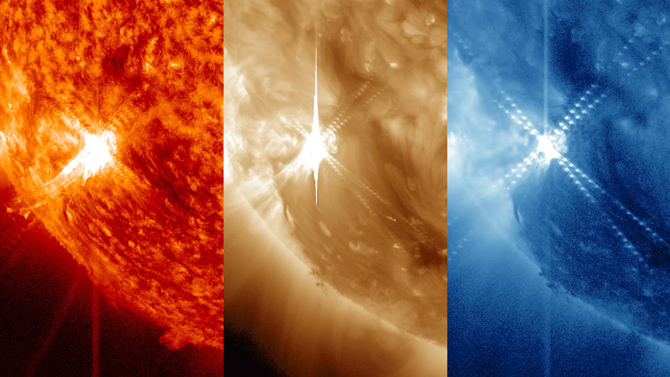
By observing the sun in a number of different wavelengths, NASA's telescopes can tease out different aspects of events on the sun. These three images of a solar flare on Nov. 13, 2012, captured by NASA's Solar Dynamics Observatory (SDO), show from left to right: light in the 304 Ångstrom wavelength, which shows light from the region of the sun's atmosphere where flares originate; light from the sun in the 193 Ångstrom wavelength, which shows the hotter material of a solar flare; and light in 335 Ångstroms, which highlights light from active regions in the corona. Credit: NASA/SDO/Goddard Space Flight Center .
On Nov. 13, 2012, the sun emitted a mid-level solar flare, peaking at 9:04 p.m. EST.
Solar flares are powerful bursts of radiation. Harmful radiation from a flare cannot pass through Earth's atmosphere to physically affect humans on the ground, however -- when intense enough -- they can disturb the atmosphere in the layer where Global Positioning System (GPS) and communications signals travel. This disrupts the radio signals for as long as the flare is ongoing, anywhere from minutes to hours.
See the website for more details:
http://www.nasa.gov/mission_pages/sunearth/news/News111312-m6flare.html(SY)
